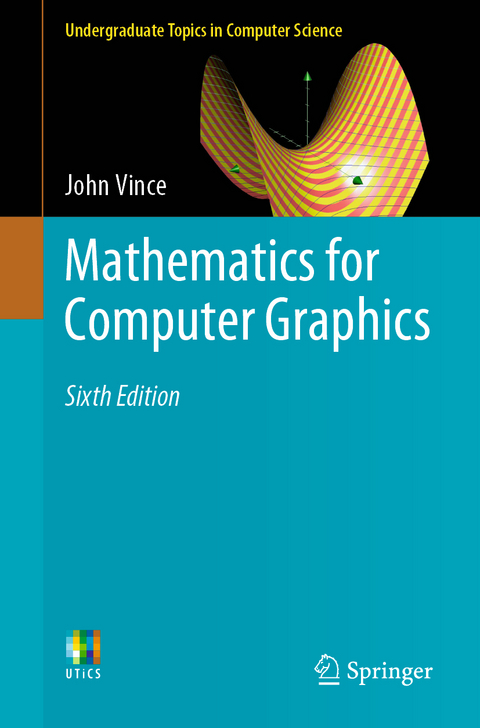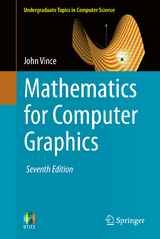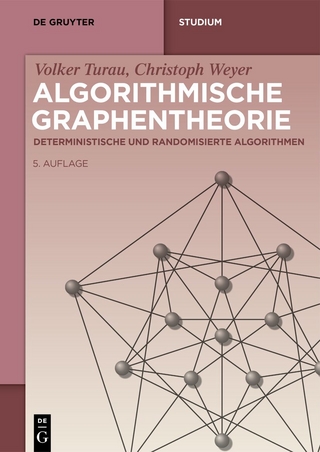
Mathematics for Computer Graphics
Springer London Ltd (Verlag)
978-1-4471-7519-3 (ISBN)
The first five chapters cover a general introduction, number sets, algebra, trigonometry and coordinate systems, which are employed in the following chapters on determinants, vectors, matrix algebra, complex numbers, geometric transforms, quaternion algebra, quaternions in space, interpolation, curves and patches, analytical geometry and barycentric coordinates. Following this, the reader is introduced to the relatively new subject of geometric algebra, followed by two chapters that introduce differential and integral calculus. Finally, there is a chapter on worked examples.
Mathematics for Computer Graphics covers all of the key areas of the subject, including:
• Number sets
• Algebra
• Trigonometry
• Complex numbers
• Coordinate systems
• Determinants
• Vectors
• Quaternions
• Matrix algebra
• Geometric transforms
• Interpolation
• Curves and surfaces
• Analytic geometry
• Barycentric coordinates
• Geometric algebra
• Differential calculus
• Integral calculus
This sixth edition contains approximately 150 worked examples and over 330 colour illustrations, which are central to the author’s descriptive writing style. Mathematics for Computer Graphics provides a sound understanding of the mathematics required for computer graphics software and setting the scene for further reading of more advanced books and technical research papers
Professor John Vince began working in computer graphics at Middlesex Polytechnic in 1968. His research activities centered on computer animation software and resulted in the PICASO and PRISM animation systems. Whilst at Middlesex, he designed the UK’s first MSc course in Computer Graphics and developed a popular program of short courses in computer animation for television designers. In 1986 he joined Rediffusion Simulation as a Research Consultant and worked on the development of real-time computer systems for commercial flight simulators. In 1992 he was appointed Chief Scientist of Thomson Training Simulation Ltd. In 1995 he was appointed Professor of Digital Media at the National Centre for Computer Animation at Bournemouth University and in 1999 he was made Head of Academic Group for Computer Animation. He was awarded a DSc by Brunel University in recognition of his work in computer graphics. He has written and edited over 45 books on computer graphics, computer animation, computer science and virtual reality, including the following Springer titles: • Calculus for Computer Graphics, 2nd edition (2019) • Mathematics for Computer Graphics, 5th edition (2017) • Imaginary Mathematics for Computer Science, (2018) • Foundation Mathematics for Computer Science, 2nd edition (2015) • Matrix Transforms for Computer Games and Animation (2012) • Expanding the Frontiers of Visual Analytics and Visualization (2012) • Quaternions for Computer Graphics (2011) • Rotation Transforms for Computer Graphics (2011) • Geometric Algebra: An Algebraic System for Computer Animation and Games (2009) • Geometric Algebra for Computer Graphics (2008)
Preface.- Introduction.- Numbers.- Algebra.- Trigonometry.- Coordinate Systems.- Determinants.- Vectors.- Matrix Algebra.- Complex Numbers.- Geometric Transforms.- Quaternion Algebra.- Quaternions in Space.- Interpolation.- Curves and Patches.- Analytic Geometry.- Barycentric Coordinates.- Geometric Algebra.- Calculus: Derivatives.- Calculus: Integration.- Worked Examples.- Appendix A.- Appendix B.- Index.
“These days nobody can imagine a world without computer graphics. … It is a challenge to explain this theory in an easy-to-follow way. But this book shows that it is possible. … It can be used both as a textbook for a computer graphics course and for self-study by practitioners and starting researchers alike.” (Agnieszka Lisowska, zbMATH 1500.68003, 2023)
| Erscheinungsdatum | 03.05.2022 |
|---|---|
| Reihe/Serie | Undergraduate Topics in Computer Science |
| Zusatzinfo | 300 Illustrations, color; 1 Illustrations, black and white; XXII, 564 p. 301 illus., 300 illus. in color. |
| Verlagsort | England |
| Sprache | englisch |
| Maße | 155 x 235 mm |
| Themenwelt | Mathematik / Informatik ► Informatik ► Software Entwicklung |
| Mathematik / Informatik ► Informatik ► Theorie / Studium | |
| Mathematik / Informatik ► Mathematik ► Angewandte Mathematik | |
| ISBN-10 | 1-4471-7519-0 / 1447175190 |
| ISBN-13 | 978-1-4471-7519-3 / 9781447175193 |
| Zustand | Neuware |
| Informationen gemäß Produktsicherheitsverordnung (GPSR) | |
| Haben Sie eine Frage zum Produkt? |
aus dem Bereich



